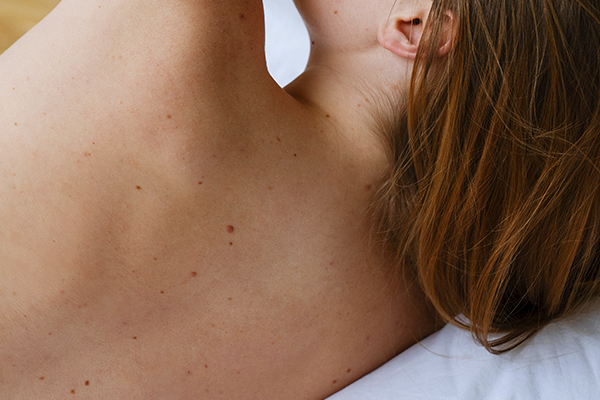Skin lumps and bumps can be a cause for concern, especially when they change in size, shape, or colour. While many of these growths are benign, some can be indicative of skin cancer. It’s essential to have any suspicious skin changes evaluated by a healthcare professional. General
practitioners (GPs) play a crucial role in diagnosing and treating skin cancer. Common methods of removal techniques include excision, shaving with a skin curette or radio-frequency treatments.
Types of Skin Lumps and Bumps
1. Moles (Nevi): Moles are common skin growths that are usually benign. However, changes in a mole’s appearance can be a sign of melanoma, a type of skin cancer.
2. Seborrheic Keratoses: These are non-cancerous growths that appear as warty, brown, or black lesions on the skin. They are generally harmless but can be removed for cosmetic reasons.
3. Lipomas: Lipomas are soft, fatty lumps that grow under the skin. They are benign and usually painless.
4. Cysts: Cysts are fluid-filled sacs that can develop under the skin. They are typically benign but can become infected or inflamed.
5. Skin Tags: Skin tags are small, benign growths that often appear in areas where the skin folds. They are harmless but can be removed if they cause discomfort.
Diagnosing Skin Cancer
When a GP evaluates a suspicious skin lump or bump, they may use several methods to diagnose skin cancer:
1. Visual Examination: The GP will examine the skin lesion and look for signs of skin cancer, such as asymmetry, irregular borders, multiple colours, and changes in size or shape.
2. Dermoscopy: A dermatoscope is a handheld device that allows the GP to examine the skin lesion in greater detail. This tool helps identify features not visible to the naked eye.
3. Biopsy: If the GP suspects skin cancer, they may perform a biopsy. This involves removing a small sample of the skin lesion and sending it to a laboratory for analysis.
Treatment Options for Skin Cancer
If a cancer is diagnosed, the GP may recommend one or more of the following treatments:
1. Surgical Excision: This is the most common treatment for skin cancer. The GP will surgically remove the cancerous lesion along with a margin of healthy tissue to ensure all cancer cells are removed.
2. Cryotherapy: Cryotherapy involves freezing the cancerous lesion with liquid nitrogen. This treatment is often used for small, superficial skin cancers.
3. Curettage and Electrodessication: This procedure involves scraping away the cancerous lesion with a curette (a sharp, spoon-shaped instrument) and then using an electric needle to destroy any remaining cancer cells.
4. Topical Treatments: For certain types of skin cancer, the GP may prescribe topical medications, such as imiquimod or fluorouracil, to apply directly to the lesion.
5. Photodynamic Therapy (PDT): PDT involves applying a photosensitizing agent to the skin lesion and then exposing it to light. This treatment destroys cancer cells while sparing healthy tissue.
Preventing Skin Cancer
Prevention is key to reducing the risk of skin cancer. Here are some tips to protect your skin:
1. Use Sunscreen: Apply a broad-spectrum sunscreen with an SPF of at least 30 every day, even on cloudy days. Reapply every two hours when outdoors.
2. Wear Protective Clothing: Wear long-sleeved shirts, wide-brimmed hats, and sunglasses to shield your skin from UV rays.
3. Avoid Peak Sun Hours: Limit sun exposure between 10 a.m. and 4 p.m. when UV rays are strongest.
4. Regular Skin Checks: Perform regular self-examinations and visit your GP annually to monitor for any changes in your skin.
Conclusion
GP’s play a vital role in diagnosing and treating benign skin lumps and bumps and treating skin cancer. By understanding the various treatment options available and taking proactive steps to protect your skin, you can reduce the risk of skin cancer and maintain healthy skin. If you notice any changes in your skin, don’t hesitate to schedule an appointment with Kendall Cosmetic for a thorough evaluation.


